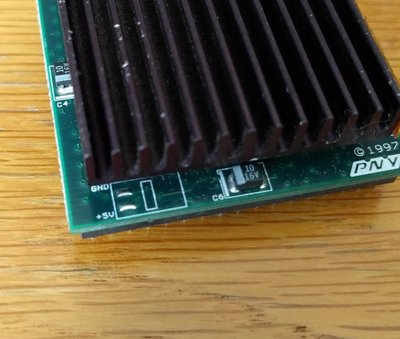First post, by HoneyBadger1650
Hi again,
Since my last posting I've gotten myself a PNY Quickchip (AMD 5x86 @ 133MHz). I put a heat sink on it (the original one was removed by the previous owner, so I put my own little one on there), removed the POD, and replaced it with the new CPU. As I was expecting, nothing ever works the first time, as was the case here - I turned on the computer, and nothing happened. The board received power, but wouldn't display anything. I made certain that the CPU was snug in the socket making sure to leave the outer rows of pins empty (those pin holes were previously filled by the POD, but this CPU doesn't make use of them), and aligning the notch with the one indicated on the socket. I then changed the board's pins from DX to SX to see if that was possibly an issue. Still nothing. I reverted the DIP switches on the bottom of the CPU back to the original settings as referenced from this page (http://web.archive.org/web/19980415093529/htt … switchreve.html). I can upload a picture of the CPU and board if they're of any help to anyone. The only thing I can think of that would be a problem would be the DIP switches, but wouldn't they just affect performance? Or maybe this board just isn't compatible with an AMD chip (I don't have a manual for the computer, so I'm not sure).
Any help would be greatly appreciated!
